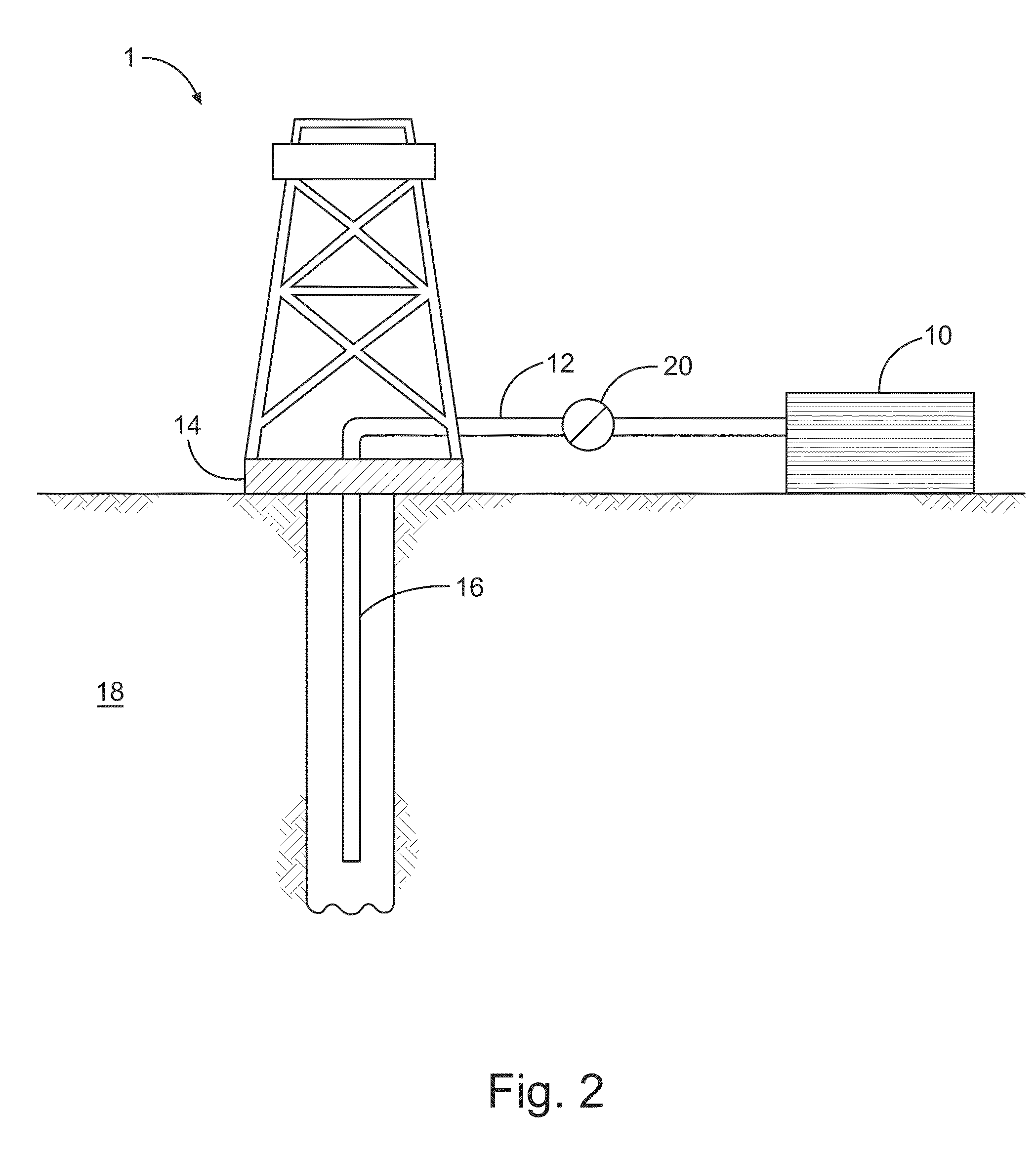Ampholyte polymers and methods of treating subterranean formations with the same
a technology of ampholyte polymer and subterranean formation, which is applied in the direction of sealing/packing, drilling pipes, and well accessories, etc., can solve the problems of large and more dominant fractures, high transportation costs, and low efficiency of viscous material preparation
- Summary
- Abstract
- Description
- Claims
- Application Information
AI Technical Summary
Benefits of technology
Problems solved by technology
Method used
Image
Examples
example 1
[0173]Two samples of an ampholyte polymeric compound including a terpolymer of acrylamide, 2-acrylamido-2-methylpropane sulfonic acid, and acryloyloxy ethyl trimethyl ammonium chloride in water were prepared at 5 gal / 1,000 gal and 20 gal / 1,000 gal. The ampholyte terpolymer had 40 wt % monomers from acrylamide, 10 wt % monomers from 2-acrylamido-2-methylpropane sulfonic acid, and 50 wt % monomers from acryloyloxy ethyl trimethyl ammonium chloride (AETAC). The samples were heated from 77° F. to 150° F. at a rate of 10° F. / min and then held at a constant temperature of 150° F. at a shear rate of 40 s−1. As shown in FIG. 3, the viscosity at the higher concentration reduces from about 155 cP to less than about 5 cP in about 90 minutes, while at the lower concentration from about 35 cP to less than about 5 cP in about 20-25 minutes.
[0174]This example illustrates that treatment fluids including the ampholyte polymeric compounds described herein can reduce in viscosity over time (e.g., can ...
example 2
[0175]Samples were prepared with (1) linear xanthan (known to viscosify high TDS fluids) at 60 lb / 1,000 gal and (2) an ampholyte polymeric compound including a terpolymer of acrylamide, 2-acrylamido-2-methylpropane sulfonic acid, and acryloyloxy ethyl trimethyl ammonium chloride at 60 gal / 1,000 gal, each in base fluids of (1) water and (2) salt water with an additional 3% KCl. The ampholyte terpolymer had the same wt % distribution of monomers as the ampholyte terpolymer used in Example 1. The viscosity of each sample was analyzed at 77° F. and 150° F. at a shear rate of 40 s−1. FIG. 4 (water samples) illustrates that the ampholyte polymeric compound provides higher viscosity than linear xanthan in water. While FIG. 5 (salt water samples) illustrates that in a high TDS environment the ampholyte polymeric compound provides for a comparable viscosity to linear xanthan.
[0176]This example illustrates that treatment fluids can be viscosified to levels comparable to that of traditional vi...
example 3
[0177]Samples were prepared with individual friction reducers at a concentration of 1 gallon per thousand gallons (e.g., 0.1% by volume) in water:[0178](1) a commercially available friction reducing agent containing partially hydrolyzed polyacrylamide;[0179](2) a multi-component, cationic friction reducing agent; and[0180](3) an ampholyte polymeric compound including a terpolymer of acrylamide, 2-acrylamido-2-methylpropane sulfonic acid, and acryloyloxy ethyl trimethyl ammonium chloride. The ampholyte terpolymer had the same wt % distribution of monomers as the ampholyte terpolymer used in Example 1.
[0181]The salinity of the samples (measured as ppm of TDS) was then increased as the percent friction reduction (“% FR”) was analyzed by pumping the sample through a test pipe while measuring the pressure drop with a pressure transducer. The % FR was calculated based on the ratio between the measured pressure drop of the sample and the pressure drop of a fresh water control sample at the...
PUM
| Property | Measurement | Unit |
|---|---|---|
| temperature | aaaaa | aaaaa |
| pressure | aaaaa | aaaaa |
| temperature | aaaaa | aaaaa |
Abstract
Description
Claims
Application Information
 Login to View More
Login to View More - R&D
- Intellectual Property
- Life Sciences
- Materials
- Tech Scout
- Unparalleled Data Quality
- Higher Quality Content
- 60% Fewer Hallucinations
Browse by: Latest US Patents, China's latest patents, Technical Efficacy Thesaurus, Application Domain, Technology Topic, Popular Technical Reports.
© 2025 PatSnap. All rights reserved.Legal|Privacy policy|Modern Slavery Act Transparency Statement|Sitemap|About US| Contact US: help@patsnap.com



